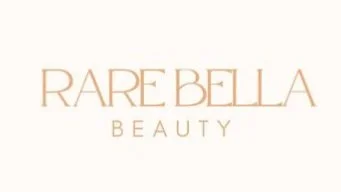What is IPL Hair Removal?
Considerations?
IPL Hair Reduction treatment targets unwanted hair growth over a course of treatments. It uses non-invasive, broad-spectrum light to treat unwanted hair on the face and body.
Using Intense Pulsed Light technology, we aim to cause targeted destruction of hair follicles without causing thermal trauma to the surrounding tissue. The IPL system can include the use of SHR, IPL and Dual Mode modalities.
Some cases are considered unsuitable for treatment:
Fitzpatrick Skin Type VI (6), Grey, white, blonde, or strawberry blonde hair.
Very fine hair, regardless of colour.
Clients who are contraindicated for treatment.
Mucous membranes (inside nose, ear, labia, mouth or eyelids)
Depending on the area treated, 8-12 treatments once every 4-8 weeks are required to achieve an effective reduction. Maintenance will be required every 3-6 months (client dependent).
Commonly Asked Questions
〰️
Commonly Asked Questions 〰️
-
IPL uses broad-spectrum light to target and disable hair follicles, reducing hair growth over time.
-
IPL uses a broad range of light wavelengths, while lasers use a single, focused wavelength. IPL is often more versatile for different treatment areas.
-
It's considered semi-permanent. You can expect long-term hair reduction, but occasional maintenance treatments may be needed.
-
Yes, IPL can be used on most areas, including legs, underarms, bikini line, face (except near the eyes), and back.
-
Most people describe it as a mild stinging or snapping sensation, similar to a rubber band flick.
-
Typically 8-12 sessions spaced 6-8 weeks apart, depending on your hair type and the area being treated.
-
8 weeks before the treatment
Avoid waxing, plucking, threading (or removing the hair from the follicle), using depilatory creams or undertaking electrolysis (including between treatments)
4 weeks before the treatment
Avoid the use of fake tan and gradual tanning creams in the area to be treated.
Avoid tanning and incidental sun exposure, including tanning beds/booths (including between treatments). The area needs to be covered and protected from the sun for safe and effective treatment.
Avoid filler injections in the treatment area.
2 weeks before the treatment
Prepare the skin with suitable skincare. This will include a tyrosinase inhibitor for Fitzpatrick Skin.
Types III+ and any skin prone to post-inflammatory hyperpigmentation (PIHP). Your treatment provider will advise you of your skincare recommendations.
Avoid prescription-strength exfoliant creams on the treatment area.
Avoid muscle relaxant injections in the treatment area.
1 week before the treatment
Avoid benzyl peroxide application in the treatment area.
If prone to cold sores, please speak to your pharmacist about a prophylactic course of antiviral medication.
3 days before the treatment
Avoid cosmeceutical Vitamin A, AHA’s & BHA’s, and Vitamin C application.
The day before treatment
Please shave the treatment area thoroughly.
-
DURING THE TREATMENT
Mild to moderate heat and discomfort is expected. Some people equate the sensation to a “rubber band flicking” on the area. These sensations should always be tolerable.
IMMEDIATELY AFTER & UP TO 5 DAYS POST-TREATMENT
A mild sunburn-like sensation.
Swelling of the hair follicles (peri-follicular oedema) can occur and appear as small, raised red bumps. This is a normal histamine reaction (Urticaria).
Itchy or dry skin.
1-3 WEEKS POST-TREATMENT
The appearance of “stubble”. This is not hair re-growth. It is the remnant of treated hairs being expelled from the follicle. Allow this hair to fall out on its own, or encourage it with gentle exfoliation. Do not pluck or tweeze. You may shave during this period
-
Daily:
Use sunscreen with SPF 30 or greater should be applied.
Avoid sun exposure to treated areas
For the first 24 hours post-treatment (or until redness and swelling subside):
Apply chilled aloe vera gel or post-laser gel up to 3 x a day.
A cold compress every hour for five to ten minutes may be soothing to the skin. Do not apply ice directly to the skin.
Avoid exercise and activities that increase perspiration and body temperature.
Avoid the use of pools, spas, and saunas.
Avoid extremely hot showers and baths.
Avoid the application of deodorant in the treatment area.
Up to 5 days post-treatment:
Avoid the use of scented lotions or soaps.
Avoid using cosmeceutical Vitamin A, AHA’s, BHA’s and Vitamin C.
Continue to apply chilled aloe vera gel or post-laser gel up to 3 x a day.
Up to 1 - 2 weeks post-treatment:
Avoid antiwrinkle injections and filler injections in the treatment area. (1 week)
After one week, start gently exfoliating the treated area. This may include using a loofah, mitts, AHA & BHA based lotions or retinol. Use of these products sooner will aggravate the skin and cause skin inflammation during the healing phase.
Avoid the use of prescription-strength exfoliant creams (prescriptive vitamin A).(2 weeks
